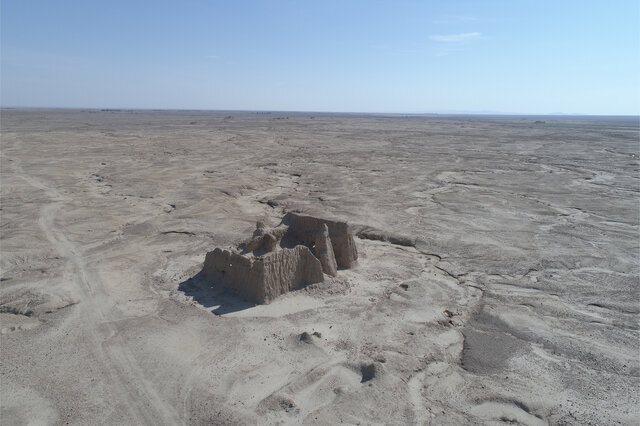Iranian archeologists hail find of relics built more than 5500 years ago

TEHRAN – Archaeologists have unearthed some treasured ruins estimated to date from 4400 BC to 3500 BC.
They identified remnants of mills, water supply channels, pottery kilns, and cellars for storing provisions in a site famed as Shahr-e Qumis in northcentral Iran, ISNA reported.
Situated near Damghan, an ancient city in Semnan province, Shahr-e (“the City of”) Qumis was allegedly one of the capitals of the Parthian Empire (247 BC – 224 CE).
The discovery was made after years of field research after Kourosh Roustaei, a senior Iranian archaeologist, said the history of human settlement in Shahr-e Qumis may go far deeper in time from what previous excavations suggested decades ago.
“According to preliminary observations, this pre-historic settlement dates from the second half of the fifth millennium BC to the first half of the fourth millennium BC, which is in accordance with the cultural sequence known for the northeast region of the Iranian plateau…,” said Roustaei who had conducted rounds of survey at the site. “However, since the excavations in all areas of this huge site have not been completed yet, it is likely that evidence for other pre-historic stages to come to light during subsequent rounds of excavations.”
His excavations, conducted under the supervision of Iran’s Research Institute of Cultural Heritage and Tourism, aimed to document archaeological remains of the site by means of remote sensing and field observations in order to identify the reasons for the formation of the site as a goal of this multi-year project. “The impact of erosion factors on the site, its ‘water supply system’ and ‘the nature of its settlements during pre-historical times’ will be examined during the following seasons of the study [in Shahr-e Qumis],” Roustaei added.
Nowadays, the plain of Shahr-e Qumis is absolutely deserted, but everywhere, one can see the remains of an old city, which was, according to the Greek author Appian of Alexandria, founded by the Seleucid king Seleucus I Nicator, according to Livius.org; a website on ancient history written and maintained since 1996 by the Dutch historian Jona Lendering.
The site comprises several ancient mounds. Only a few of them have been properly excavated, and the area between them has mostly been ignored. The field of shards at Shahr-e Qumis measures some 7 by 4 kilometers or 28 square kilometers, which suggests that it must have boasted tens of thousands of inhabitants.
Some say that Alexander the Great stopped here in Shahr-e Qumis in the summer of 330 BC and it became part of the Seleucid Empire after his death. Qumis was destroyed by an earthquake in 856 CE, and it was probably abandoned afterward.
Damghan lies at an elevation of 1,200 meters just southeast of the Alburz Mountains on a large, barren gravel plain. It is on the road and railway between Tehran and Mashhad.
Archaeological excavations at nearby Tepe Hissar reveal occupation from prehistoric times through the Sasanian period (224-651 CE). Damghan was an important town and capital of the medieval province of Qumis but was destroyed by Afghans in 1723. The town trades in pistachios and almonds.
AFM
Leave a Comment